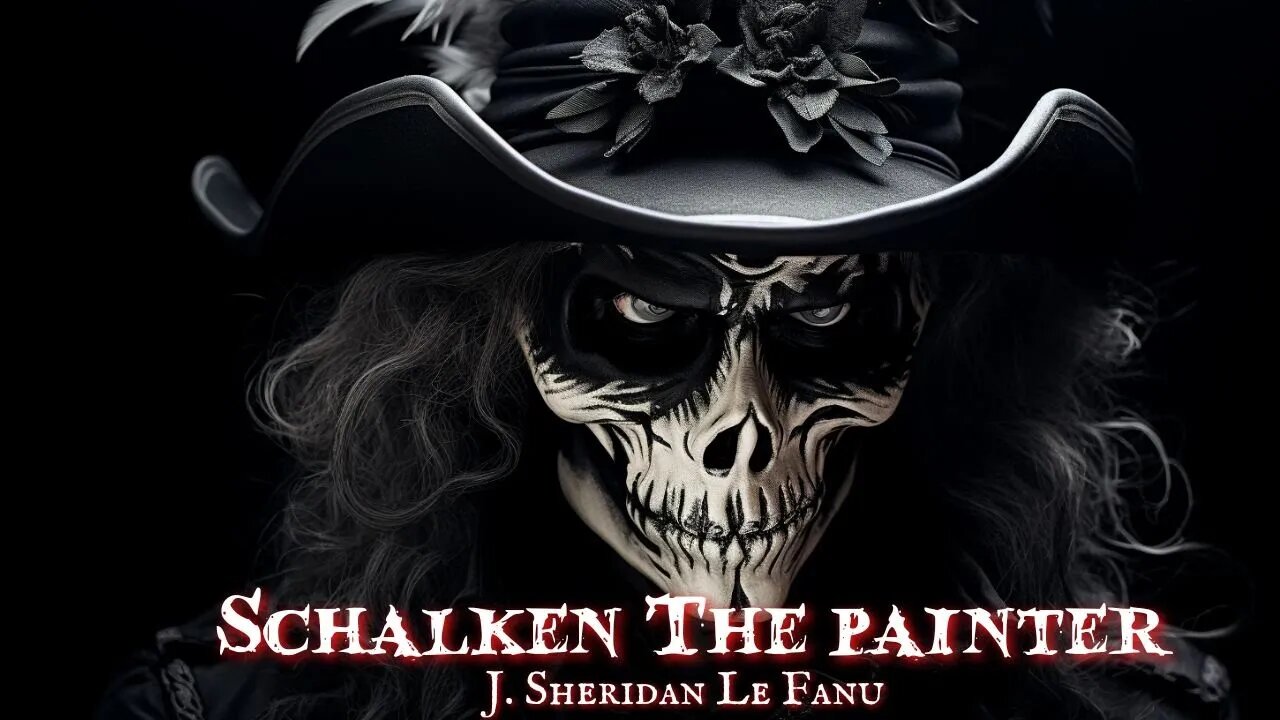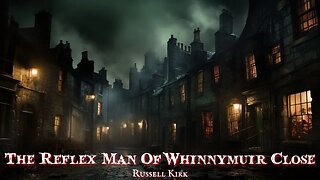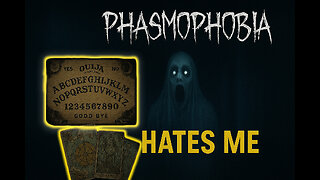Premium Only Content

Schalken The Painter by J S Le Fanu #audiobook
Schalken The Painter Analysis
In "Schalken The Painter," Vanderhausen can be seen as a representation of the shadow archetype, embodying the dark, repressed, and sinister aspects of the characters Douw and Schalken. The shadow is a psychological concept in Jungian theory that represents the hidden, suppressed, and often undesirable aspects of the psyche. It holds the unacknowledged fears, desires, and weaknesses that individuals may project onto others.
Douw exhibits veniality and by agreeing to Vanderhausen's proposal to marry Rose in exchange for money. Schalken shows cowardice in letting his true love go off with a monster and not attempting to fight for her. A mixture of greed and cowardice conspire to let Rose marry Vanderhausen.
Vanderhausen first sees Rose worshipping at St Laurence's church, suggesting she represents Schalken's spiritual and pure anima, which Vanderhausen threatens to corrupt. Later, Rose returns starved for wine and meat, eating ravenously like an animal, showing Vanderhausen has begun corrupting her purity.
They are concerned about her welfare, but not enough to stop the marriage. They fail to confront the true nature of Vanderhausen, despite their suspicions. The shadow archetype is at play here, as Douw and Schalken repress their moral qualms and engage in self-deception to rationalize their actions.
Rose, on the other hand, can be viewed as representing the anima archetype, which symbolizes the feminine aspects within the male psyche. She embodies love, beauty, and the idealized image of femininity. Schalken's infatuation with Rose and his desire to marry her reflect his yearning for the anima, a sense of completeness and emotional fulfillment.
ose represents the anima archetype to Schalken - his ideal of feminine virtue, beauty, and spirituality. However, Schalken fails to live up to the anima's call for heroic action. When Rose returns in distress, begging for help, Schalken is unable to rescue her from Vanderhausen. His only response is to create an artistic representation of Rose through the painting, rather than fighting to save the real woman he loved.
However, Schalken ultimately fails to fully embrace and integrate the anima. Instead of actively pursuing a real relationship with Rose, he settles for creating a painting of her. This represents a lack of courage and an avoidance of engaging with the complexities and challenges of real-life relationships. Schalken's choice to capture Rose in an artistic representation rather than fighting for the reality of their connection illustrates his failure to fully embody the anima and engage with his own desires and emotions.
Throughout the story, the interactions between Vanderhausen, Douw, Schalken, and Rose reveal the interplay of shadow and anima archetypes. Vanderhausen represents the dark, suppressed aspects of the characters, while Rose represents the idealized feminine qualities that both Schalken and Douw yearn for. Their choices and behaviors reflect the psychological dynamics at play within the individual and their relationships.
Schalken's painting immortalizes his failure to overcome his shadow and rescue his anima from destruction.
Exclusive Videos For You!
"Hey everyone! Are you a fan of The Classic Ghost Stories Podcast and looking for a way to access exclusive content and perks? Well, you're in luck! By signing up as a member on our YouTube channel, you'll have access to members-only perks such as exclusive videos, behind-the-scenes footage, and much more. Don't miss out on this opportunity to take your ghost story experience to the next level. Sign up as a member today by following this link:
https://www.youtube.com/channel/UC9o9Vf0G92Pu2MCgKr73vhQ/join
And thank you to all our members who already have!"
Music by The Heartwood Institute
[https://bit.ly/somecomeback]
https://www.youtube.com/channel/UC9o9Vf0G92Pu2MCgKr73vhQ/join
-
 1:24:30
1:24:30
Classic Ghost Stories on Rumble
1 year ago $0.01 earnedThe Reflex-Man of Whinnymuir Close by Russell Kirk
5461 -
 2:04:10
2:04:10
Inverted World Live
9 hours agoJapanese Memory Eraser | Ep. 101
95.8K18 -
 2:42:52
2:42:52
TimcastIRL
7 hours agoTrump To Deploy National Guard To Chicago, Baltimore, Democrats Call To Resist | Timcast IRL
216K79 -
 3:22:30
3:22:30
Laura Loomer
8 hours agoEP141: Muslims Call For Political Assassinations At Michigan Palestinian Conference
46.9K25 -
 4:39:32
4:39:32
Barry Cunningham
8 hours agoBREAKING NEWS: PRESIDENT TRUMP IS GOING TO TAKE CHICAGO! LFG!!! (IT'S MOVIE NIGHT!)
90.8K64 -
 1:23:59
1:23:59
Man in America
10 hours agoTrump Demands Big Pharma Come Clean on Covid Shots w/ Dr. David Martin
50.6K38 -
 1:40:27
1:40:27
megimu32
6 hours agoOTS: Labor Day Sitcom Blowout - Tim, Ray, & Relatable Chaos!
41.2K5 -
 4:09:30
4:09:30
StevieTLIVE
6 hours agoWarzone Wins w/ FL Mullet Man
38.5K1 -
 1:04:01
1:04:01
BonginoReport
9 hours agoLefties Wish Death on Trump but He’s BACK! - Nightly Scroll w/ Hayley Caronia (Ep.125)
194K83 -
 3:18:28
3:18:28
Tundra Tactical
7 hours ago $3.50 earnedWe Survived the Military… But Not This Basement
38.3K